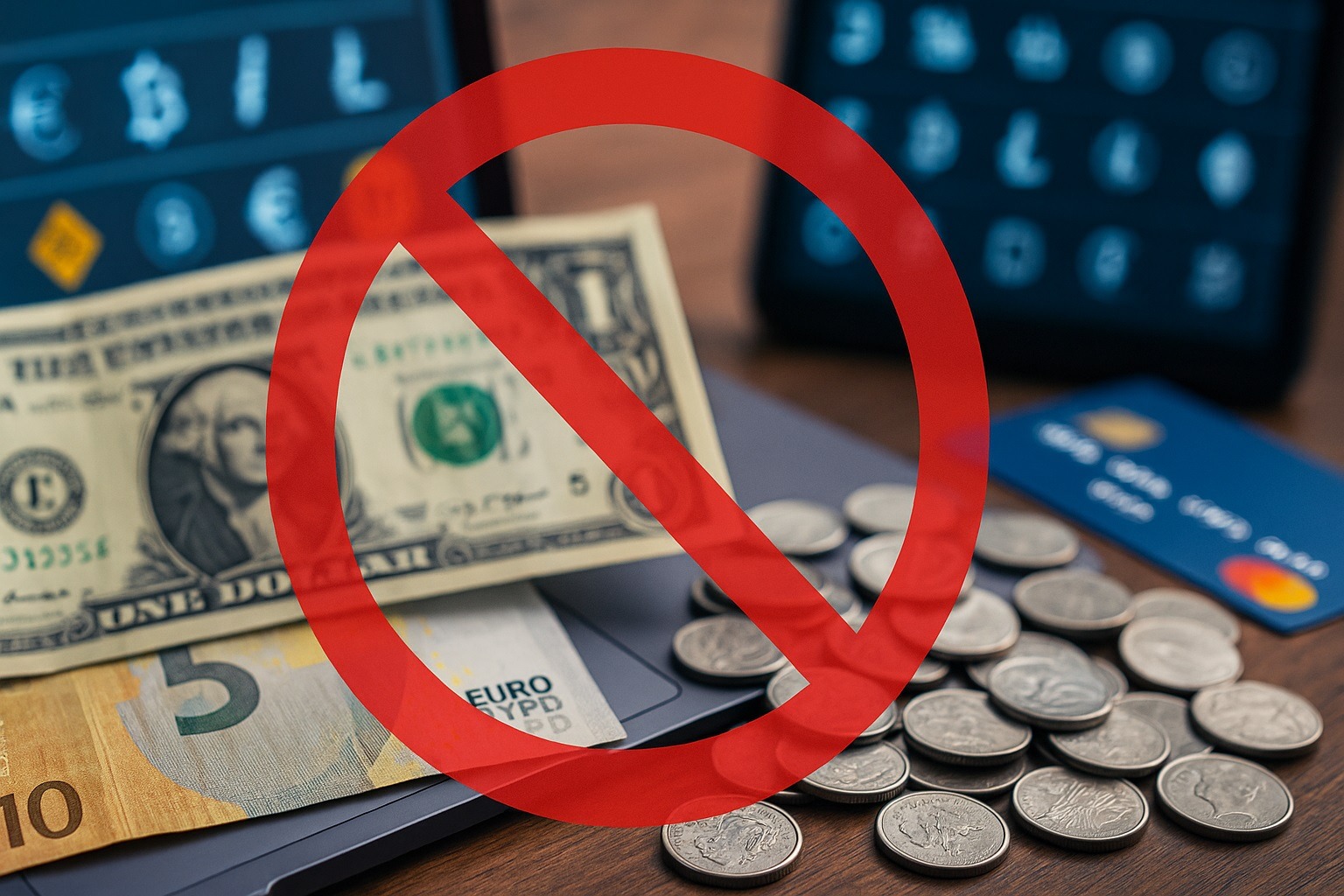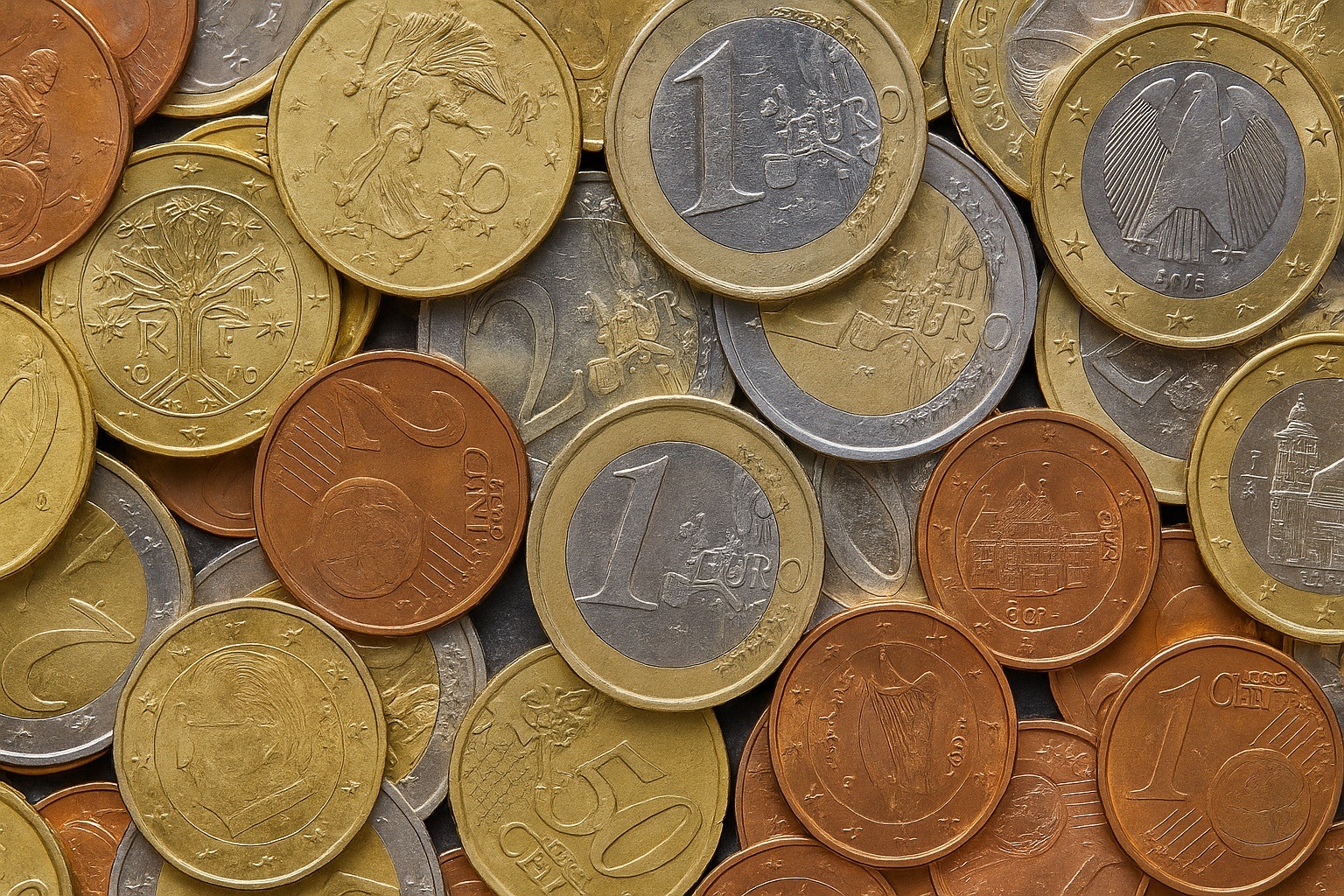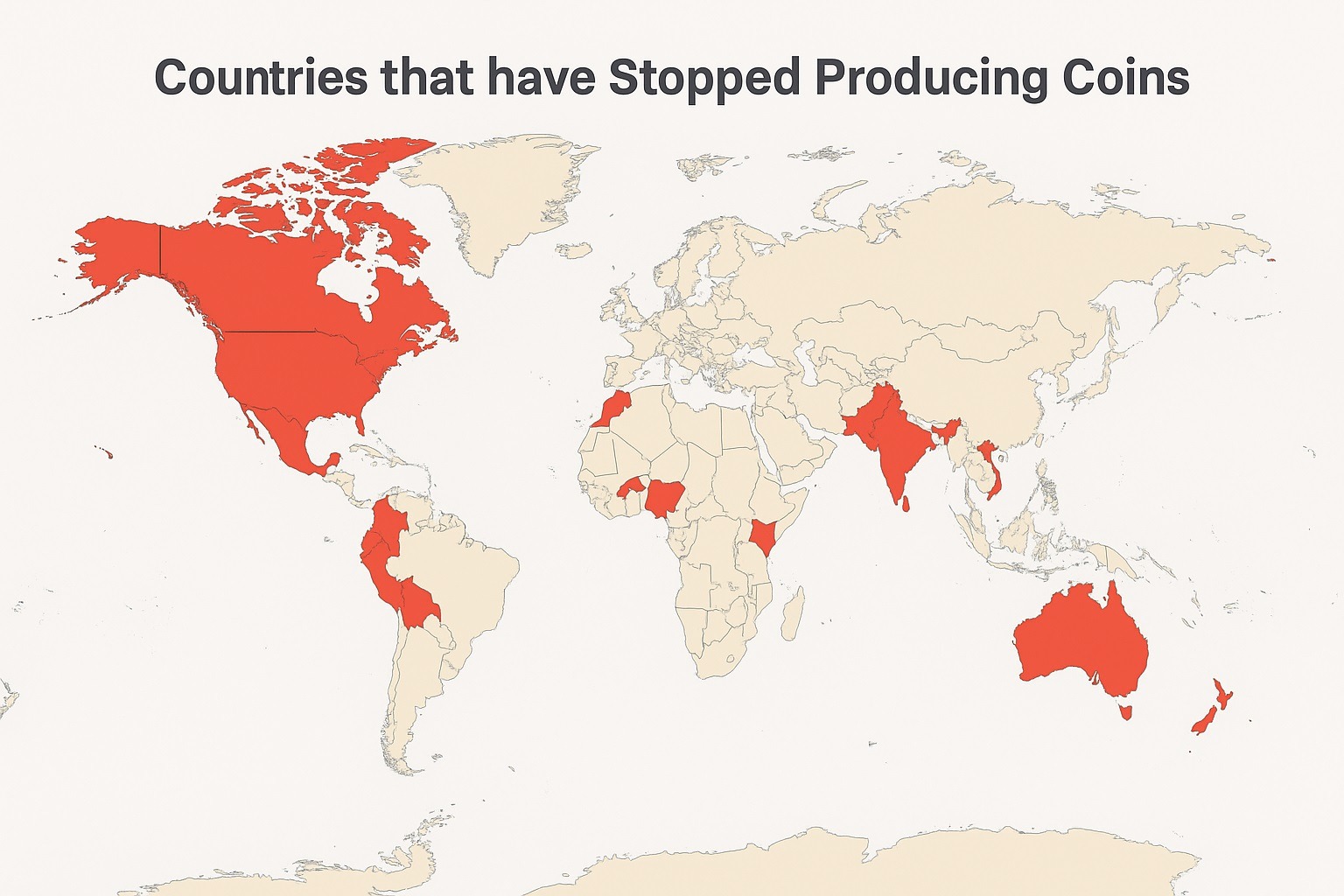Although many countries today continue to use both paper and coin currencies in their payment systems, some countries have either completely abolished the use of coins or reduced it to a symbolic level. The main reasons for this include high production costs, the widespread adoption of digital payment systems, and the loss of economic function of small-denomination coins. In particular, the production and circulation of low-value coins in developed countries have become a matter of debate in terms of logistics and efficiency.
Countries that have ended or limited the use of coins have generally made this change in line with strengthened technological infrastructures and the goal of a cashless society. Countries such as Canada, Australia, and Sweden have withdrawn some coin denominations from circulation and shifted towards the use of digital and paper money. This trend is a significant indicator not only in terms of economic efficiency but also in reflecting the transformation of payment habits in societies.
Which countries do not use coins?

Although the number of countries that have completely ended the use of coins is quite small, some countries have withdrawn low-value coins from circulation and prefer to use only higher-denomination banknotes and digital payment systems. Among these countries, Canada, Australia, and New Zealand stand out. For example, Canada withdrew the 1-cent coin from circulation in 2013. Similarly, New Zealand removed the 1 and 2 cent coins from circulation years ago and later eliminated the 5 cent coin as well. These decisions were generally made because the production costs of low-value coins exceeded their actual value.
Some European countries have taken similar steps. Finland and the Netherlands have reduced the production of 1 and 2 euro cent coins and now use rounding systems for such small amounts in stores. Sweden, on the other hand, has almost completely shifted to digital payments, and the use of both cash and coins has significantly decreased. While coins have not been entirely abolished in these countries, they are rarely used in daily transactions. Overall, this change is directly related to digitalization, economic efficiency, and the transformation of payment systems.
| Country | Status | Description |
|---|---|---|
| Canada | 1 cent coin withdrawn from circulation (2013) | No longer produced due to high cost; payments are rounded up/down. |
| New Zealand | 1, 2, and 5 cent coins withdrawn | Only coins of 10 cents and above are in use. |
| Australia | 1 and 2 cent coins withdrawn (1990s) | Rounding system applied; small coins removed from circulation. |
| Finland | No production of 1 and 2 euro cents | Prices are rounded to the nearest 5 cents; not used in daily transactions. |
| Netherlands | 1 and 2 euro cents not practically used | Legally valid but not used in stores; rounding is applied. |
| Sweden | Very low cash usage, coins rarely used | Over 95% of payments are digital; low-value coins like 1 and 2 krona are uncommon. |
| Norway | 50 øre coin withdrawn in 2012 | The lowest coin is now 1 krone; overall cash usage is very low. |
| Denmark | 25 øre coin withdrawn in 2008 | Small coins are not used; cash usage is very limited. |
In which countries is only paper money used?

Today, there are almost no countries that use only paper money entirely; however, some countries have withdrawn low-value coins from circulation and have effectively shifted to using only paper money and digital payment systems for daily transactions. In these countries, the production of 1 cent, 2 cent, or similar low-value coins has been halted or their usage has become merely symbolic. For example, Canada, Australia, and New Zealand have removed 1 and 2 cent coins from circulation and introduced rounding systems to the nearest 5 cents in purchases. As a result, daily payments in these countries are made almost exclusively with paper money.
Similarly, some Northern European countries such as Sweden, Norway, and Finland have significantly reduced both cash usage and coin circulation. Sweden, in particular, is one of the fastest-moving countries toward a cashless society globally, with over 95% of daily payments made digitally. Low-value coins have either been completely withdrawn or are no longer used in practice. Therefore, these countries have adopted a system where paper money and digital currency dominate in everyday transactions.
Are there any countries where coins have been completely abolished?

Yes, there are countries where coins have been completely abolished, but this is quite rare. Most countries prefer to withdraw only low-value coins rather than eliminating coins entirely. However, in some countries, coins have become virtually unused in daily life.
Examples:
- Canada: Completely withdrew the 1 cent coin from circulation in 2013. Other coins still exist, but the 1 cent is no longer in use.
- New Zealand: Removed 1, 2, and 5 cent coins; the smallest coin in use is now 10 cents.
- Australia: 1 and 2 cent coins were withdrawn from circulation in 1992.
- Sweden: Production of low-value coins such as 1 and 2 krona has been stopped; the use of cash and coins is nearly nonexistent.
The number of countries that do not produce or hold coins at all is very low, as higher-value coins (such as 1 dollar or 2 euros) are typically still part of the system, even if only symbolically. However, in some countries, due to public preference and the influence of digitalization, only paper and digital money are used in practice.
Why are coins not used in some countries?

The main reasons for the lack of coin usage in some countries are based on economic, technological, and social factors. One of the most important reasons is production cost. The cost of minting low-value coins is often higher than their actual value. For example, if producing a 1 cent coin costs 2 cents, it becomes unsustainable for the country’s economy. Therefore, many countries have withdrawn small denominations like 1 and 2 cents and shifted toward paper money and digital payment systems.
Another significant reason is the widespread use of digital payment systems. In developed countries, bank cards, mobile payments, and contactless systems have generally reduced the use of cash. This has made coins unnecessary in daily life. Additionally, some societies avoid the hassle of carrying small coins and perceive them as “worthless” from a psychological standpoint. When all these factors come together, some countries either completely abandon the use of coins or limit it significantly due to both economic reasons and public preferences.
What is used instead of coins?

In countries where coins have been abolished or their use has decreased, the following alternatives are used:
Paper Money:
For small purchases, the lowest denomination of paper money is used instead of coins. For example, in Canada, after the 1 cent coin was withdrawn, payments are rounded and made using 5 cent coins or paper bills.
Digital Payments:
Contactless cards, mobile payment apps (Apple Pay, Google Pay, QR systems, etc.), and bank transfers are widely used. In countries like Sweden, over 95% of daily payments are made digitally.
Rounding System:
In cash transactions, the total amount is rounded to the nearest 5 or 10 cents, eliminating the need for small coins. This system is used in countries such as Finland, the Netherlands, and Canada.
Loyalty and Point Systems:
In some countries, small amounts are transferred to digital wallets or customer loyalty points, avoiding the use of physical money.
In short, paper money, digital payment tools, and rounding systems are used instead of coins. These systems offer both economic and practical advantages.
Are there countries that do not use coins due to digital currency?

Yes, due to the widespread use of digital currency and electronic payment systems, there are countries where coins are almost never used. This situation has become particularly evident in Scandinavian countries. Strong technological infrastructure, the prevalence of mobile payment applications, and public trust in digital systems have played a key role in this transformation.
For example, Sweden is one of the fastest-digitizing economies in the world. Over 95% of daily transactions are conducted digitally, and many businesses no longer accept cash. The use of coins has almost completely disappeared. Similarly, in countries like Norway and Finland, coins are in circulation only symbolically, while digital payment systems dominate. In these countries, governments support the vision of a cashless society and encourage digital transformation. Therefore, the rise of digital currency has significantly reduced or rendered the use of coins obsolete.
Countries that abolished coins due to economic crisis

Countries that abolished coins due to economic crises generally made this decision because of reasons such as hyperinflation, high production costs, or a significant devaluation of their currency. Here are some countries that exemplify this situation:
Zimbabwe
- Status: The national currency became completely dysfunctional due to hyperinflation.
- Development: In 2009, the Zimbabwean dollar was abandoned, and foreign currencies like the US dollar and South African rand began to be used. Coin usage largely ended.
Venezuela
- Status: Coins became worthless due to extreme inflation.
- Development: The value of the bolivar dropped rapidly; coins were withdrawn from circulation or stopped being used by the public. The government focused on digital payments.
Argentina
- Status: Ongoing inflation and economic instability.
- Development: Low-value coins disappeared from daily life. Most small transactions are now made using digital or paper money.
In these countries, the removal of coins was not the result of planned digitalization, but rather a consequence of economic crisis. As currency values dropped, the cost of production became economically irrational, leading governments to abolish or abandon the use of these units.
List of countries that do not use cash

Here is a list of countries where the use of cash has significantly declined and digital payment systems have become dominant:
| Country | Status |
|---|---|
| Sweden | Cash usage has dropped below 5%; many businesses do not accept cash. |
| Norway | Digital payments dominate; a high percentage of people do not carry cash. |
| Finland | Contactless cards and mobile payments are widespread; cash is very limited. |
| Denmark | Government policy promotes digital payments over cash. |
| Netherlands | Credit cards and mobile payment systems are very common; cash is rapidly decreasing. |
| China | Thanks to Alipay and WeChat Pay, cash is almost unused in major cities. |
| South Korea | Credit card usage is very high; digital payment infrastructure is advanced. |
| United Kingdom | Mobile payments are especially popular among young people; many businesses have switched to digital payments. |
| Australia | The share of cash spending is rapidly declining; card and phone payments are widespread. |
| Canada | Digital payments are common; even small purchases are made with contactless cards. |
In these countries, cash remains legally valid, but in daily life it is rarely used, with digital systems preferred instead. Scandinavian countries, in particular, are among the closest to a cashless society model.
Countries that have stopped coin production

Here are some countries that have completely or partially stopped producing coins and the relevant explanations:
| Country | Status | Explanation |
|---|---|---|
| Canada | Production of 1 cent coin stopped (2012) | Due to high production costs, the 1 cent was withdrawn; rounding is applied in payments. |
| New Zealand | Production of 1, 2, and 5 cent coins stopped | The 5 cent coin was withdrawn in 2006, and the 1 and 2 cent coins earlier. |
| Australia | Production of 1 and 2 cent coins stopped (1992) | Although still legally valid, these coins are not used; a rounding system is in place. |
| Norway | Production of 50 øre coin stopped (2012) | The smallest coin is now 1 krone; 50 øre is no longer in use. |
| Denmark | Production of 25 øre coin stopped (2008) | Lower-denomination coins were withdrawn. |
| Finland | 1 and 2 euro cent coins not produced or used | Prices are rounded to the nearest 5 cents in stores. |
| Netherlands | 1 and 2 euro cent coins no longer produced | Existing coins are in legal circulation but not used in daily shopping. |
| Sweden | 1 and 2 krona coins withdrawn in the 2010s | Use of cash and coins is extremely low; digital payments dominate. |
| Ireland | Production of 1 and 2 cent coins stopped (from 2015) | Prices are rounded to 5 cents, eliminating the need for small coins. |
These countries have reduced or completely stopped coin production either for economic reasons (such as high production costs) or due to the digitalization of public payment habits. This process typically began with low-denomination coins and became more widespread.
The cost of coins and countries’ decisions

The production of coins—especially low-denomination units—has become economically unsustainable over time. This is because the total cost of the metal, labor, and distribution involved in minting a coin often exceeds the face value of the coin itself. For example, producing small units like 1 cent or 1 kuruş can sometimes cost up to twice their actual value. This leads to budget deficits and resource waste.
As a result, many countries have decided to withdraw small coins from circulation for reasons of economic efficiency. Canada eliminated the 1 cent coin in 2012 when its production cost rose to 1.6 cents. Similarly, Australia and New Zealand abolished their 1 and 2 cent coins due to high costs. In Europe, countries like Finland, the Netherlands, and Ireland have stopped producing 1 and 2 euro cent coins and implemented a rounding system to the nearest 5 cents. These decisions not only help save government budgets but also accelerate the spread of digital payment systems.
